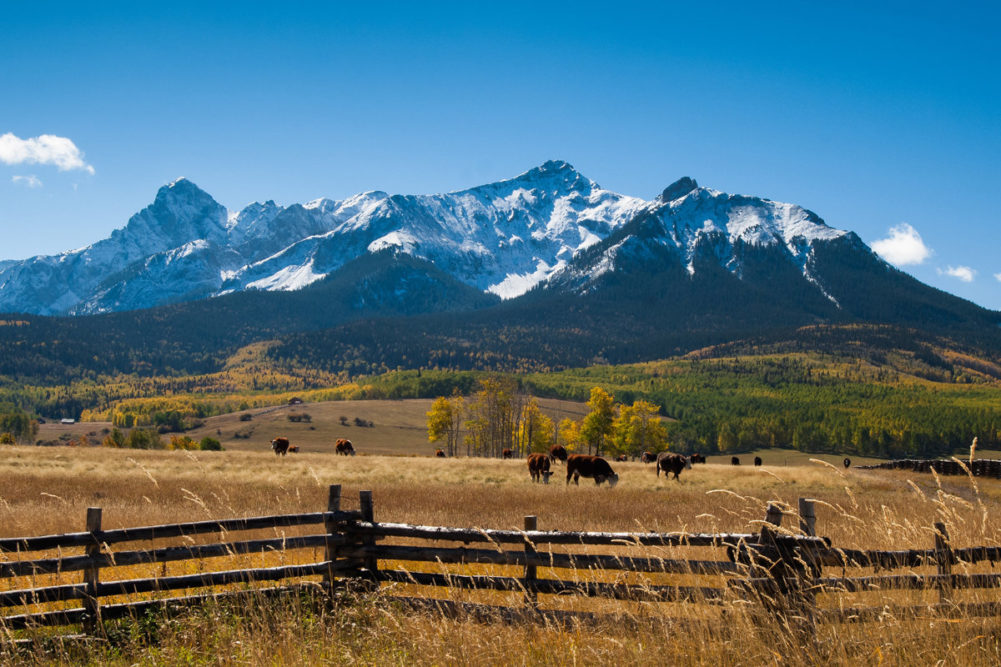FORT COLLINS, COLO. – A research team at Colorado State University (CSU) recently published a report that concluded global beef production could reduce its greenhouse gas emissions (GHG) by as much as 50% in certain regions with the most significant potential reduction happening in Brazil and the United States.
The recent study looked at different strategies that could improve ranch management practices, including increasing efficiency to produce more beef per unit of GHG, which would mean growing bigger cows faster. Another approach mentioned was enhanced land management to increase soil and plant carbon sequestration on grazed lands.
According to the information published in Global Change Biology, cattle produce about 78% of total livestock GHG emissions.
“Our analysis shows that we can improve the efficiency and sustainability of beef production, which would significantly reduce the industry’s climate impact,” said Daniela Cusack, an assistant professor in the Department of Ecosystem Science and Sustainability at Colorado State. “But at the same time, we will never reach net-zero emissions without further innovation and strategies beyond land management and increased growth efficiency. There’s a lot of room, globally, for improvement.”
The research showed that a 46% reduction in net GHG emissions per unit of beef was achieved at sites using carbon sequestration management strategies on grazed lands, including using organic soil amendments and restoring trees and perennial vegetation to areas of degraded forests, woodlands and riverbanks.
Furthermore, researchers found an overall 8% reduction in net GHGs was achieved at sites using growth efficiency strategies. Only 2% of studies showed net-zero emissions.
While collecting its data, the research team analyzed 292 comparisons of “improved” versus “conventional” beef production systems across Asia, Australia, Brazil, Canada, Latin America and the United States. The global analysis showed that Brazilian beef production holds the most potential for emission reductions.
“In the studies analyzed, researchers found a 57% GHG emission reduction through improved management strategies for both carbon sequestration and production efficiency in Brazil,” the paper said. “Specific strategies include improved feed quality, better breed selections and enhanced fertilizer management.”
Field management along with intensive rotational grazing schemes like adding soil compost, reforestation of degraded areas and selectively planting forage plants bred for sequestering carbon in soil had the biggest impact.
“My home country of Brazil has more than 52 million hectares of degraded pastureland – larger than the state of California,” said Amanda Cordeiro, co-author and a graduate student at CSU. “If we can aim for a large-scale regeneration of degraded pastures, implementation of silvo-agro-forestry systems and adoption of other diversified local management strategies to cattle production, Brazil can drastically decrease carbon emissions.”
US research shows that carbon sequestration reduced beef GHG emissions by 100% or net-zero emissions in a few grazing systems but efficiency strategies were not as successful in the US studies, possibly because of a high use of the strategies in the region already.
Even though the study showed significant reduction in GHG footprints of beef production that used the various management strategies, scientists do not know the full potential of moving to emission-reducing practices since there is very little data on global practice adoption levels.
“Asia, for example, is one of the most rapidly growing beef markets, but there is an imbalance between the amount of research focus on improving beef production and the growing demand for beef,” Cusack said. “We know with the right land management and efficiency strategies in place, it’s possible to have large reductions in emissions across geographic regions, but we need to keep pushing for additional innovations to create a truly transformational shift in the way the global beef system operates to ensure a secure food supply and a healthy environment.”



